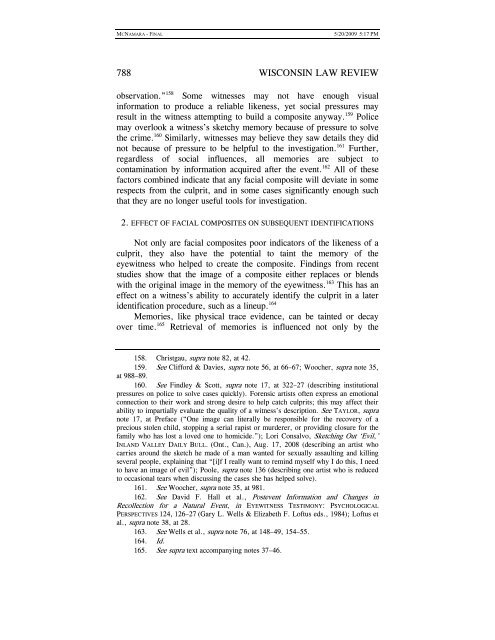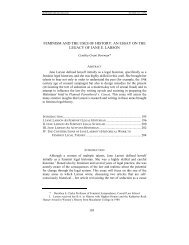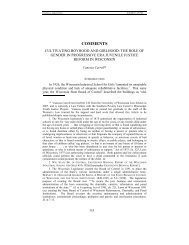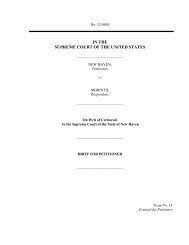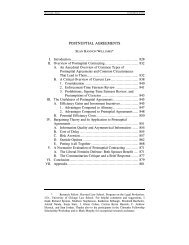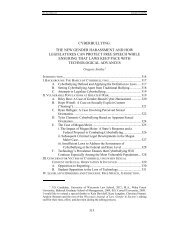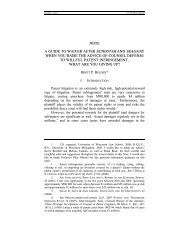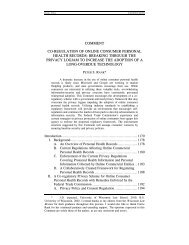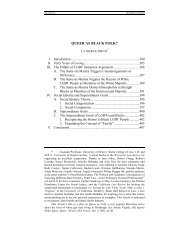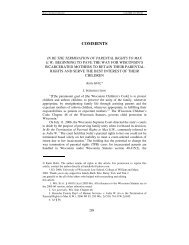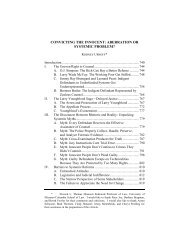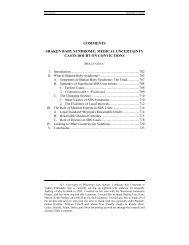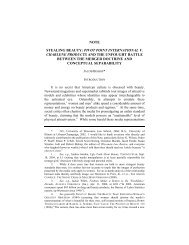comment sketchy eyewitness-identification ... - UW Law School
comment sketchy eyewitness-identification ... - UW Law School
comment sketchy eyewitness-identification ... - UW Law School
Create successful ePaper yourself
Turn your PDF publications into a flip-book with our unique Google optimized e-Paper software.
MCNAMARA - FINAL 5/20/2009 5:17 PM<br />
788 WISCONSIN LAW REVIEW<br />
observation.” 158 Some witnesses may not have enough visual<br />
information to produce a reliable likeness, yet social pressures may<br />
result in the witness attempting to build a composite anyway. 159 Police<br />
may overlook a witness’s <strong>sketchy</strong> memory because of pressure to solve<br />
the crime. 160 Similarly, witnesses may believe they saw details they did<br />
not because of pressure to be helpful to the investigation. 161 Further,<br />
regardless of social influences, all memories are subject to<br />
contamination by information acquired after the event. 162 All of these<br />
factors combined indicate that any facial composite will deviate in some<br />
respects from the culprit, and in some cases significantly enough such<br />
that they are no longer useful tools for investigation.<br />
2. EFFECT OF FACIAL COMPOSITES ON SUBSEQUENT IDENTIFICATIONS<br />
Not only are facial composites poor indicators of the likeness of a<br />
culprit, they also have the potential to taint the memory of the<br />
<strong>eyewitness</strong> who helped to create the composite. Findings from recent<br />
studies show that the image of a composite either replaces or blends<br />
with the original image in the memory of the <strong>eyewitness</strong>. 163 This has an<br />
effect on a witness’s ability to accurately identify the culprit in a later<br />
<strong>identification</strong> procedure, such as a lineup. 164<br />
Memories, like physical trace evidence, can be tainted or decay<br />
over time. 165 Retrieval of memories is influenced not only by the<br />
158. Christgau, supra note 82, at 42.<br />
159. See Clifford & Davies, supra note 56, at 66–67; Woocher, supra note 35,<br />
at 988–89.<br />
160. See Findley & Scott, supra note 17, at 322–27 (describing institutional<br />
pressures on police to solve cases quickly). Forensic artists often express an emotional<br />
connection to their work and strong desire to help catch culprits; this may affect their<br />
ability to impartially evaluate the quality of a witness’s description. See TAYLOR, supra<br />
note 17, at Preface (“One image can literally be responsible for the recovery of a<br />
precious stolen child, stopping a serial rapist or murderer, or providing closure for the<br />
family who has lost a loved one to homicide.”); Lori Consalvo, Sketching Out ‘Evil,’<br />
INLAND VALLEY DAILY BULL. (Ont., Can.), Aug. 17, 2008 (describing an artist who<br />
carries around the sketch he made of a man wanted for sexually assaulting and killing<br />
several people, explaining that “[i]f I really want to remind myself why I do this, I need<br />
to have an image of evil”); Poole, supra note 136 (describing one artist who is reduced<br />
to occasional tears when discussing the cases she has helped solve).<br />
161. See Woocher, supra note 35, at 981.<br />
162. See David F. Hall et al., Postevent Information and Changes in<br />
Recollection for a Natural Event, in EYEWITNESS TESTIMONY: PSYCHOLOGICAL<br />
PERSPECTIVES 124, 126–27 (Gary L. Wells & Elizabeth F. Loftus eds., 1984); Loftus et<br />
al., supra note 38, at 28.<br />
163. See Wells et al., supra note 76, at 148–49, 154–55.<br />
164. Id.<br />
165. See supra text accompanying notes 37–46.


